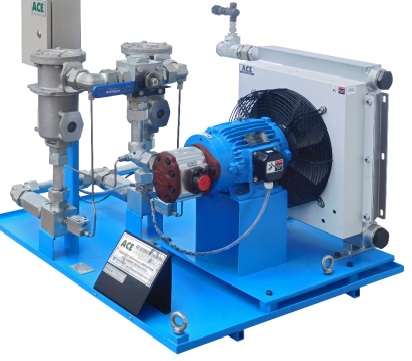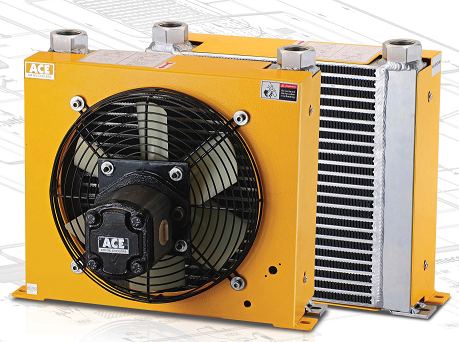Air cooled oil cooling of Centralized Oil Lubrication Systems, Bearings & Bushes.

Air cooled Oil Cooling of Hydraulic Systems of CNC Machines & other Equipment
April 20, 2021
Which air cooled oil coolers should be used for cooling of Spindles?
June 9, 2021Air cooled oil cooling of Centralized Oil Lubrication Systems, Bearings & Bushes.
Heating of the oil of centralized lubrication systems, bearings & bushes depends on
- The inefficiencies of the equipment that is being lubricated.
- The heat picked up by the oil from other heat sources in the equipment being lubricated, steam or flue gas heated rollers for example. Typical examples are the dryer section of a paper mill or hot metal rolling in a steel rolling mill or the bearings of a gas based generating set. In a paper mill for instance the steam flowing through hollow rolls is used to dry paper. The heat from the roller is transmitted to the bearings, thereby heating the bearing oil.

In these type of oil cooling systems the lubricating oil is stored in a reservoir. It is picked up from the reservoir by a pump, cooled, filtered and dispensed to the various bearings, bushes, gears and other mechanical rotating elements that it is supposed to lubricate. As in the case of gearboxes there are three primary objectives lubricate, remove heat & to remove the debris that has got generated due to the wear & tear of the mechanical moving parts.
A part of the input power of the equipment or system that is being lubricated is converted into heat. The amount of heat generated is a function of the power being transmitted through the gearbox / bearing / bush and the system efficiency. Also adding to the heat load is the heat picked up by the oil through conduction. The oil cooler sizing should be such that it is able to dissipate the total heat load (i.e.) the heat generated plus the heat picked up by conduction.
It is imperative that centralized oil lubrication systems supply cooled, filtered oil because their primary purpose is to lubricate & cool various bearings, bushes, gears & other rotating parts in the plant. If we are going to send out hot oil from the centralized oil lubrication system, the oil will not be able to perform its function effectively. This will result in premature failures which means incurring replacement & downtime costs. An inefficient centralized lubrication system is a silent killer, in the sense that if the lubrication is not adequate, the equipment will start drawing more power. Resulting in inflated power bills, causing losses to the organization day on day, week on week, month on month. Installing a good, adequately sized oil lubrication system with an efficient oil cooler will pay many times over in the future by cutting down costs.
Selection of oil cooler size for a lubrication system
For this we have to look at the primary source of energy that is driving the system being lubricated. We have to look at each one of the individual components that are part of the equipment or system, calculate the inefficiencies of each component and add them up so that we can know what is the amount of heat that the oil is expected to carry back into the tank.
The Rule of Thumb
We can take 0.3 – 0.4KW per liter of oil that is being pumped. For example, if we have a 100 liter per minute pump, then a 30 to 40 KW heat exchanger should suffice. This is of course a very crude & generic estimation, however it should cover most common industrial applications.
Ace Range of Air Cooled Oil Cooler Our Products Click Here



